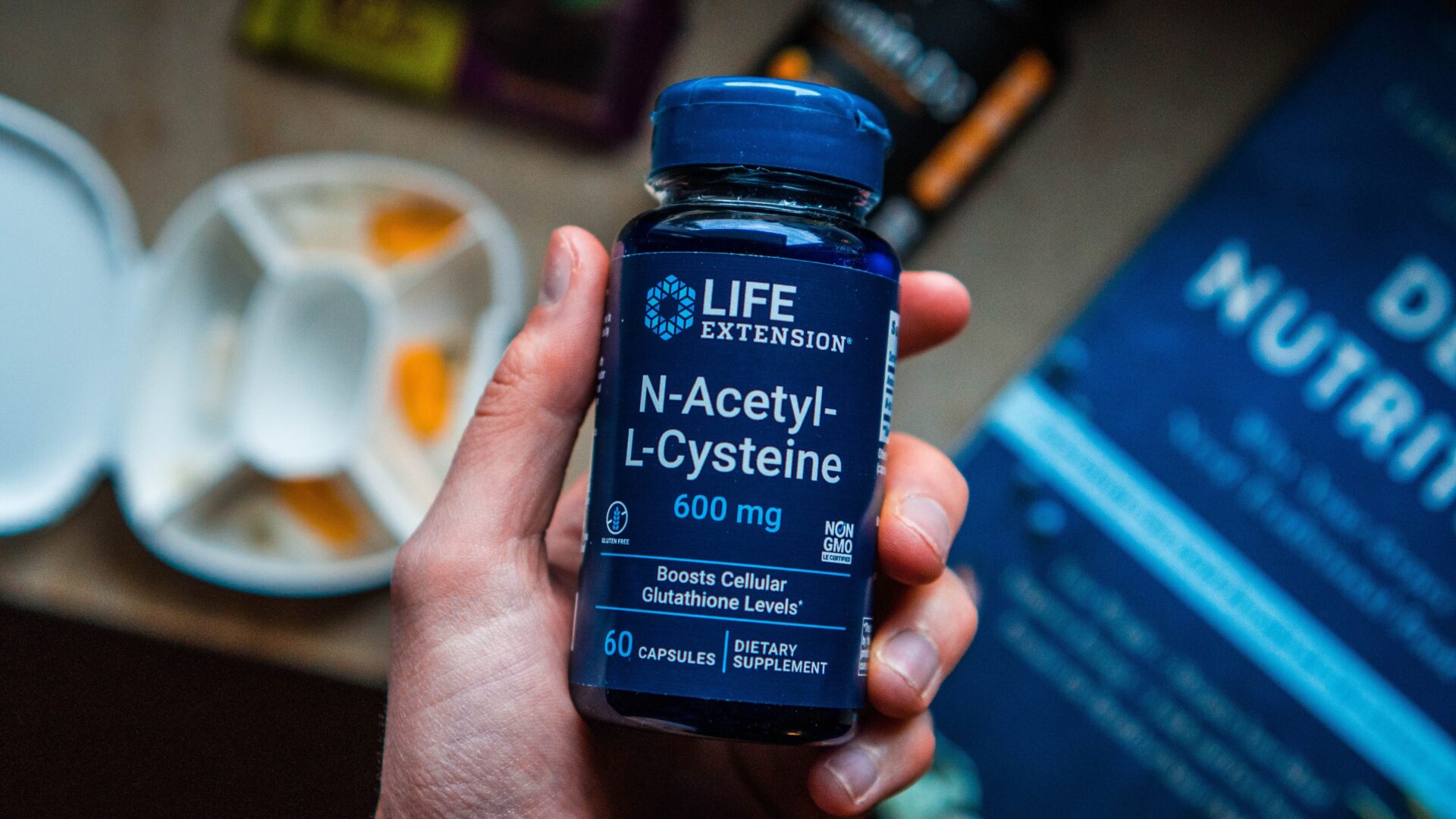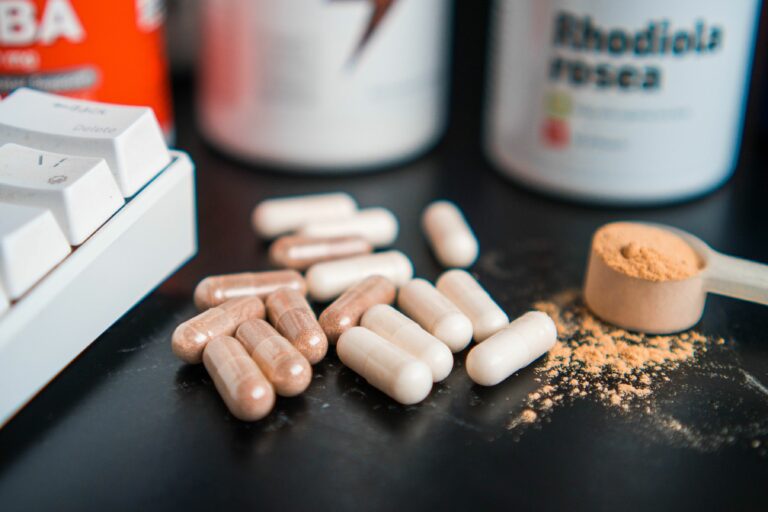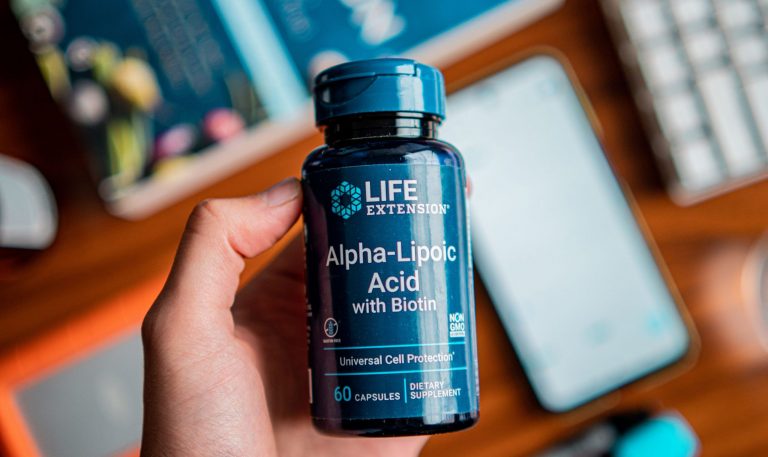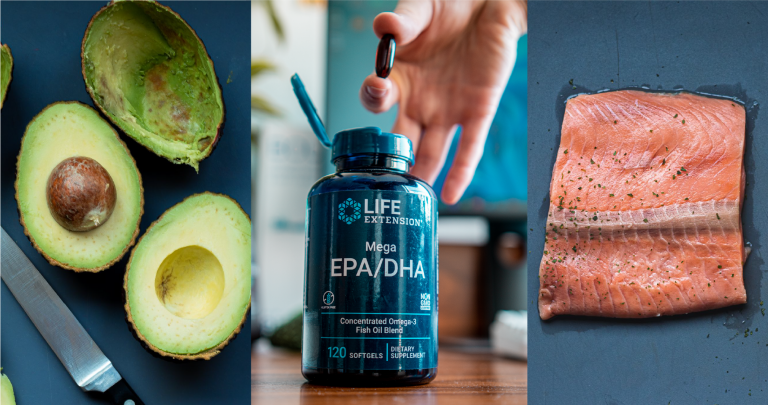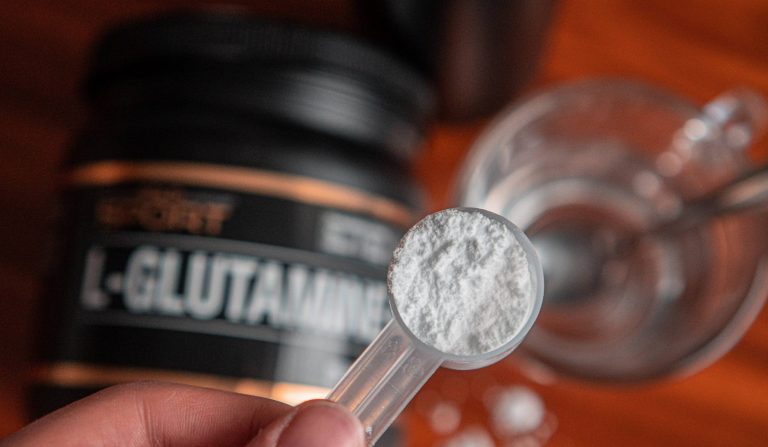N-Acetyl Cysteine (NAC) – Detox & Anti-Aging Benefits
N-Acetyl Cysteine is a semi-essential amino acid with potent antioxidant properties. As a precursor to Glutathione [the master antioxidant], it has potent anti-inflammatory properties. NAC has been the subject of interest for many biohackers as well, due to its anti-aging benefits. It’s been widely used for lung function, liver detox, and neuroprotection.
NAC: N-acetyl cysteine
What is N-acetyl cysteine? It is a stable form of the non-essential amino acid cysteine. Cysteine supports numerous metabolic functions and is important for the formation of protein structures, namely collagen. More importantly, it’s essential to synthesize glutathione, the most important antioxidant in our body. (1)
NAC is considered to be semi-essential, as it can be made from other amino acids such as l-serine and methionine. When ingested, NAC converts to L-cysteine in the liver which supports the synthesis of glutathione.
The reason NAC is preferred over pure L-cysteine or Glutathione supplementation is safety, tolerance, and absorption. After 1-2 hours of ingestion, NAC reaches peak plasma levels. Oral administration of glutathione alone is broken down quickly and doesn’t cross the blood-brain barrier. Cysteine alone isn’t effective at restoring GSH levels as it oxidizes fast. (2) (3) (4) (5)
To support the antioxidant properties of NAC, l-cysteine, and glutathione, one can increase the intake of foods like:
- Cysteine: ricotta, yogurt, turkey, pork, liver, beef, and eggs.
- N-Acetyl Cysteine: onion and garlic
- Glutathione: spinach, okra, avocados, turmeric, broccoli, asparagus, and almonds
DISCLAIMER
The information provided is for general purposes only and not intended as professional medical advice. Always consult with a qualified healthcare professional regarding any medical condition or supplement use.
Benefits of NAC
To understand the benefits of NAC, we first need to skim through why antioxidants are so important, especially glutathione.
Free radicals are natural by-products of metabolism that contribute to oxidative damage, speeding up aging. High oxidative stress incurs damage to DNA, lipids, and proteins. This cycle leads to dysfunctional cells, poor health and drives inflammation. (6)
Antioxidants help us ward off oxidative stress by neutralizing free radicals. The goal is maintaining a redox balance between free radicals and antioxidants, so our cells can function optimally.
Glutathione is the master antioxidant in the body, amplifying the body’s defense mechanism. NAC helps replenish glutathione, especially in times of increased stress or sickness. (7)
Fun Fact
The body has a natural antioxidant defense system that maintains redox balance, using endogenous antioxidant enzymes like SOD, CAT, and GSH, being the most efficient.

Glutathione – Liver Protection & Detox
The liver is the largest organ in the body that’s responsible for removing toxins, and regulating blood clotting and blood sugar levels, amongst other vital functions. Liver detox is about protecting the liver and improving its function, enhancing the detoxification process. Detoxification helps excrete metabolic waste, drugs, heavy metals, and environmental toxins.
Glutathione is the main antioxidant that helps support liver function [and detox], recognized as a cytoprotective agent. During times of increased stress, sickness, or toxins our liver works harder, depleting GSH levels faster. (8) (9)
NAC helps replenish glutathione stores by providing the semi-essential amino acid, which is a precursor to glutathione. NAC binds to toxic metabolites and scavengers free radicals, exerting hepatoprotective properties. (10) (1)
In 30 patients with NAFLD, NAC supplementation led to a significant decrease in serum alanine aminotransferase (ALT) after three months compared to vitamin C, suggesting that NAC can enhance liver function in individuals with non-alcoholic fatty liver disease. (11)
Fun Fact
NAC has also been used to facilitate detoxification from certain toxins in pharmaceutical drugs, namely acetaminophen. It’s also been used to overcome cannabis, nicotine, and alcohol addiction.
NAC – Antioxidant Defense
As previously stated the increased rate of oxidative damage drives inflammation up – which is the main precursor to the development of modern-day diseases, increases DNA damage, and speeds up aging.
N-acetylcysteine (NAC) boasts impressive antioxidant and anti-inflammatory properties. As a potent antioxidant, NAC elevates intracellular glutathione (GSH), crucial for cellular redox balance. By suppressing the activity of something called nuclear factor kappa B (NF-κB), it can reduce the levels of inflammatory markers like TNF-α and interleukins (IL-6 and IL-1β) (12) (13)
The use of NAC in restoring GSH levels is firmly established, with GSH playing a crucial role as the primary endogenous antioxidant responsible for maintaining cellular oxidative balance. (3)
In rodents, NAC exhibits immune-modulating activity, demonstrated by its ability to reduce levels of inflammatory cytokines such as TNF-α, IL-1β, NF-κB, IL-6, and IL-10. (14)
Conclusion
In summary, NAC’s dual role involves enhancing intracellular GSH levels as an antioxidant and suppressing NF-κB activity to mitigate inflammatory markers, highlighting its therapeutic potential in oxidative stress-related conditions.
Cognition and Mood
NAC can improve cognitive function by affecting the levels of two neurotransmitters, glutamate and dopamine. Glutamate is an excitatory neurotransmitter that helps facilitate cognitive processes like thinking, focusing, and learning. Dopamine is a crucial hormone for mood regulation, affecting motivation and satisfaction.
Mitochondrial dysfunction is a common element in depression, bipolar disorder, schizophrenia, and autism. It reduces the efficiency of producing energy in the brain, compromising its function and regeneration. Dysfunction in the glutaminergic and dopaminergic systems also contributes to such psychiatric diseases. (14)
NAC with its potent antioxidant actions, cytokine activity reduction, modulation of dopamine and glutamate, and reversal of mitochondrial dysfunction could significantly aid in improving brain health, cognitive function, and neuroprotection. (14) (3)
This is why NAC has shown efficacy in certain diseases related to cognitive dysfunction, reward-seeking pathways, emotional instability, and trouble focusing, including bipolar disorder, schizophrenia, addiction, and COPD. (3)

Neuroprotection
Neurodegeneration that comes with age stems from all of the previously mentioned processes like plaque buildup, reduced antioxidant activity, and mitochondrial dysfunction. Extra antioxidants for the brain could help improve neuroinflammation and even stimulate certain neurotropic factors.
NAC can increase cysteine levels, which has been shown to modulate certain neurotransmitter pathways and affect the level of glutamate and dopamine. Additionally, NAC provides oxidative homeostasis, fighting inflammation. (15) (3)
In Alzheimer’s disease, oxidative damage is the main factor. Lipoic acid (LA) and NAC, in combination, show promise in protecting mitochondrial function and preventing age-related disorders like AD. (16) (17)
In Parkinson’s disease, the progression is faster with degradation in dopaminergic function, namely, dopamine-induced cell death. Treatment for PD has been debated as numerous studies on animal models have shown positive outcomes, improving dopamine release, glutathione levels, and mitochondrial activity. (1)
Conclusion
NAC can support neurotransmitters like glutamate and dopamine, which have been shown to lessen the degree of neurodegeneration. Additionally, it acts neuroprotective by providing the key antioxidant for the brain.
Lungs, Mucus, and Respiration
NAC has also been used to improve breathing and respiration by thinning out the mucus secreted in the lungs.
Mucus clearance serves as a protective mechanism that helps ward off pathogens and particles in the respiratory system. NAC can assist in the breakdown of mucus proteins, reducing its viscosity and speeding up clearance. This can be particularly beneficial in conditions like COPD, bronchitis, pneumonia, or asthma. (18) (10)
Due to its mucolytic function, NAC has been used as an anti-inflammatory drug in many European countries to improve chronic bronchitis symptoms. (1) (19)
Conclusion
NAC helps thin out and clear mucus from the lungs faster. This can potentially enhance respiration and ease breathing in conditions like pneumonia, asthma, bronchitis, and COPD.
Anti-Aging and Mitochondria Function
Improving mitochondria function directly enhances oxygen usage and energy creation [ATP] which is linked to more energy and anti-aging effects.
NAC can improve oxygen delivery to tissues, boost mitochondrial ATP production, and adjust the microvascular tone to increase blood flow to vital organs. (10)
In animal models like rats and mice, NAC was shown to:
- delay the onset of motor deficits and Huntington’s disease (20)
- improve glutathione levels and mitochondria function (21)
- decreased mTOR protein levels and improved mitochondrial dynamic. (22)
If some of these physiological effects can be replicated in humans, then NAC can be a viable tool in enhancing mitochondria function and potentially, lengthening lifespan.
Recovery and Performance
As with any other antioxidant NAC can help speed up recovery in athletes. Especially in times of increased stress, like the physiological stress from intense exercise, free radicals production is increased, compromising DNA integrity and cellular function, which is supported by antioxidants. (23)
One investigation found that while NAC did not affect non-fatigued muscle, after 3 minutes of repetitive contractions it greatly increased force output by around 15%, showcasing its potential to improve muscle performance as well. (1)
Use / Dosage / Side Effects
Dosage
Uses
Side Effects
Precaution
The most common dose for N-Acetyl Cysteine is 600mg. Different sources cite between 600-1800 mg daily, divided into 2-3 doses.
NAC has been used mainly for liver detox [acetaminophen detox], mucus thinning [cough, lung conditions, flu, COPD], cognitive function [AD, PD, ASD], and inflammation.
as with all supplements, there are potential side effects of taking NAC, especially on an empty stomach including nausea, diarrhea, itching, and vomiting. Also, NAC smells like rotten eggs due to their sulfur content.
NAC is considered generally safe, but some populations need to take extra precautions including pregnant or breastfeeding women, children, and people with kidney diseases, asthma, or bleeding disorders.
DISCLAIMER
The information provided is for general purposes only and not intended as professional medical advice. Always consult with a qualified healthcare professional regarding any medical condition or supplement use.
Conclusion
- NAC is a semi-essential amino acid, a precursor to Cysteine which supports the synthesis of the master antioxidant in the body, Glutathione.
- NAC has been used for liver protection and detox, assisting in the removal of toxins from alcohol, heavy metals, and certain drugs [acetaminophen].
- Due to its mucolytic effect, it’s used for mucus thinning and respiratory conditions. NAC may play a role in anti-aging due to its potential to enhance mitochondrial function.
- NAC can affect levels of dopamine, glutamate, and neuroinflammation which can potentially assist in improving cognitive function and neuroprotection.
- The role of NAC and GSH are important especially in times of increased physiological stress, like intense exercise, sickness, mental stress, or exposure to toxins.

